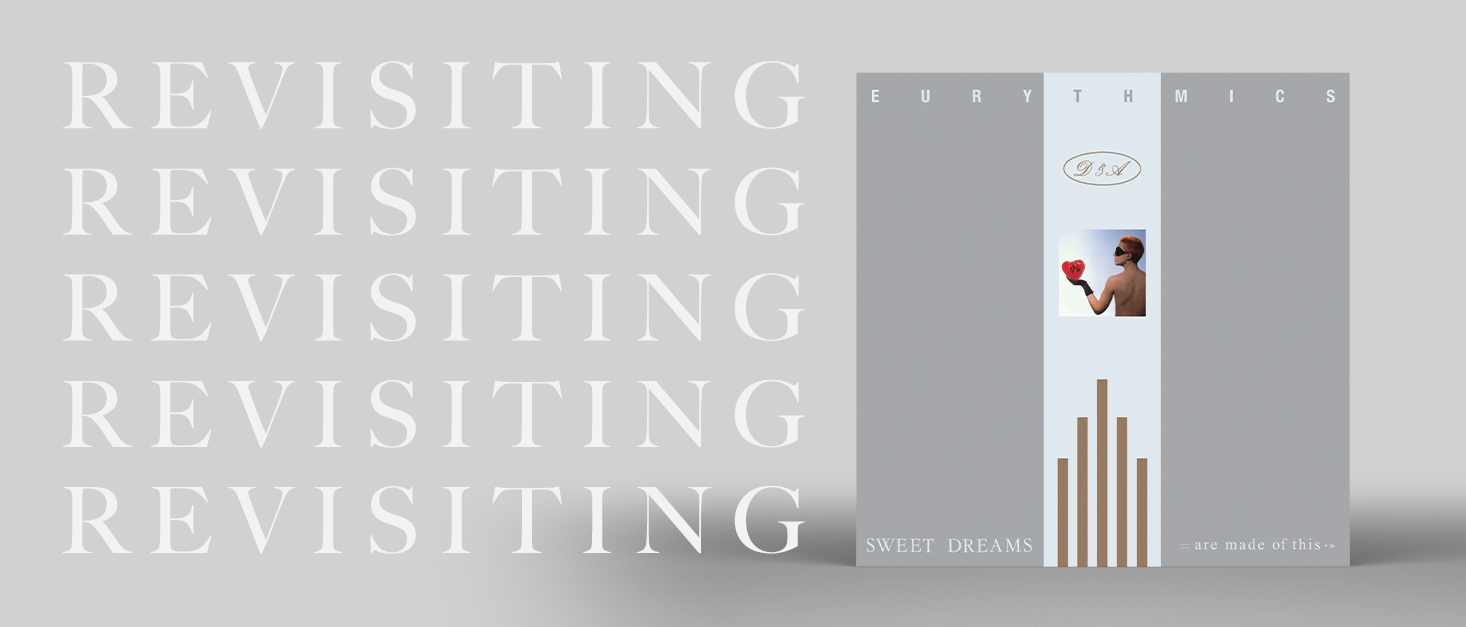
Revisiting: Eurythmics - Sweet Dreams (Are Made of This)
In the latest in our series looking at classic albums from decades past, we explore the sound of Annie Lennox and David Stewart’s synth pop masterpiece
Tags: Music,Has there ever been a more exciting time for popular music than the early 1980s? The 60s is often held up as a golden era, but there is something special about the radical period of transition from guitar-based to synthesiser-driven pop. The arrival of the synth opened up a world of creative possibilities, inspiring various artists to embrace new sounds and approaches to making music.
Annie Lennox and David Stewart were two such artists. In the early 1980s, the pair abandoned their punk and new wave roots (in The Catch, and then The Tourists) to become an experimental duo working purely with electronics. This, they later said, gave them a new-found freedom to explore their musical potential.
In an era where so-called synth pop duos (Blancmange, Soft Cell, OMD and Yazoo) dominated the charts, Lennox and Stewart possessed a distinctive look and sound. Lennox captured people’s attention with her powerful vocals, orange crew cut and sharp suits, whilst Stewart created opulent musical backdrops. On January 4, 1983, the pair released their second album, Sweet Dreams (Are Made of This) – an innovative and sophisticated project that captured the pop music zeitgeist, and brought us one of the decade’s standout hits.
The album contained four single releases: ‘This Is the House’, ‘The Walk’, ‘Love Is a Stranger’ and ‘Sweet Dreams (Are Made of This)’. The latter climbed the charts after gaining exposure on MTV, with a video that juxtaposed shots of the band with more abstract footage, and it soon became a global hit. It reached number one on the US Billboard chart, and entered the top ten in multiple countries including New Zealand, Spain, France, Belgium and South Africa, making Lennox and Stewart world-famous.
“Its frenetic, uptempo musical backing had shades of Georgio Moroder’s work with Donna Summer, but the vocals and lyrics sounded far darker.”
Success didn’t come overnight for Eurythmics, however. The band’s first album, In the Garden, failed to enter the charts, as did the first five singles they released before ‘Sweet Dreams…’
In 1982, they undertook some serious studio work that led to the creation of their breakthrough track. It was a stunning sounding single, and far from a typical pop song in its composition. Its frenetic, uptempo musical backing had shades of Georgio Moroder’s work with Donna Summer, but the vocals and lyrics sounded far darker. It also had an unconventional structure – lacking a chorus, its verses provide the hook line.
As Stewart later recalled, Eurythmics’ label hadn’t shown much interest in their output prior to Sweet Dreams... “I kept going in there and would say, ‘look, we’re doing really great things’, but they just couldn’t understand it,” he said.
The album’s release was the culmination of a period that started in a hotel room in Wagga Wagga, New South Wales. Lennox and Stewart were at the end of The Tourists’ ill-fated Australian tour, when Stewart began experimenting with an Electronic Dream Plant (EDP) Wasp synthesiser – a famously unreliable but glorious sounding late 70s analogue design. “I could actually get some interesting things happening,” he later said, “like, sequenced little sort of random hold patterns that sounded very exciting to us, even though it was just coming out of the plastic speaker in a crappy hotel room.”
Lennox and Stewart had been in a relationship, but this ended when they returned to London. While the pair still saw each other often – Lennox’s room was just one floor above Stewart’s – their break up left Stewart with more time to focus on his music.
He bought EDP’s matching sequencer for his Wasp, the Spider, plus a TEAC 144 cassette Portastudio. “I kind of voraciously learned how to use that really quickly,” he once said of the latter, “and I realised it was a little miracle.” A Roland TR-606 drum machine came next, and allowed Stewart to start working on music that became tracks on Sweet Dreams…
“It had a huge sound that gave the album real presence”
Most of the album was recorded at a studio in Chalk Farm, London, which was set up by Stewart and Adam Williams (former bassist with The Selecter) using a £5,000 bank loan. Like most small, low budget studios of the time, it was just 8-track (most state-of-the-art facilities, in comparison, offered 64), but it was furnished with cutting edge effects like a Roland Space Echo, plus the iconic Roland SH-101 and Oberheim OB‑X synthesisers. These, plus the second-hand Soundcraft mixing desk, contributed greatly to the album’s distinctively rich, almost lush tonality, which many modern producers would kill for.
Another important touch, both to the album and its title track, was the purchase of a £2,000 Movement Drum System I, a powerful drum synthesiser and sequencer that can be seen in the video for the ‘Sweet Dreams’ single. It had a huge sound that gave the album real presence.
At the time of making the album, Stewart was in a state of elation, after surviving an operation to repair a punctured lung . He described himself as “on fire, positive” and “full-on”. Lennox, however, was on the verge of clinical depression. The combination of these two extremes of mood brought an added frisson to the recording sessions, which comes through in the finished music.
“With limited resources, they had to adopt some ingenious processes to achieve the sounds they desired”
Things became yet more unpredictable when the duo lost their studio space in Chalk Farm, forcing them to move to a second venue in London’s Crouch End. With limited resources, they had to adopt some ingenious processes to achieve the sounds they desired.
“The reason why our records sounded sort of weird was ’cause we didn’t really have any money’” Stewart once said. “In the middle of ‘Sweet Dreams’, you can hear me and Annie playing milk bottles. It was me and Annie pouring out the water ’til we got them in tune and then actually going, ‘Oh should we tap them with a piece of wood, or a piece of metal?’ – just experimenting ’til we could actually get the sound we wanted.” This forced invention is a recurring theme throughout the album, and another reason why it sounds unique even now.
“The end result feels like a polished pop gem, rather than an album recorded in ramshackle studios”
The album offers much more than its title track. It showcases Lennox and Stewart’s prodigous songwriting talents, as well as the former’s blistering vocals and the latter’s production genius. Songs like ‘Jennifer’ and ‘This City Never Sleeps’ hint at a real strength and depth in the duo’s creative partnership, and the end result feels like a polished pop gem, rather than an album recorded in ramshackle studios on the rebound from a disastrous live tour and a failed romance. Listening back, Eurythmics sounds like an established supergroup at the height of its powers, rather than a pair of bedsit dwelling 20-somethings who were pleading with their record label not to lose interest in them.
By the time Lennox and Stewart’s musical partnership ended in 1990, Stewart’s production skills were in high demand. He was proud of his abilities, once explaining: “I really did learn everything completely from the bottom up.”
It’s his production genius that makes Sweet Dreams… a great sounding album, even when played on the very best, modern, high end hi-fi equipment. The album feels even more exotic now because of his unique approach, part of which was born from his unrelenting desire to achieve sonic perfection, even in adverse conditions. Reflecting on the album’s title track, Stewart once described it as, “an experiment that turned into a song” – and as its enduring popularity has shown, it’s one that yielded some spectacular results.













